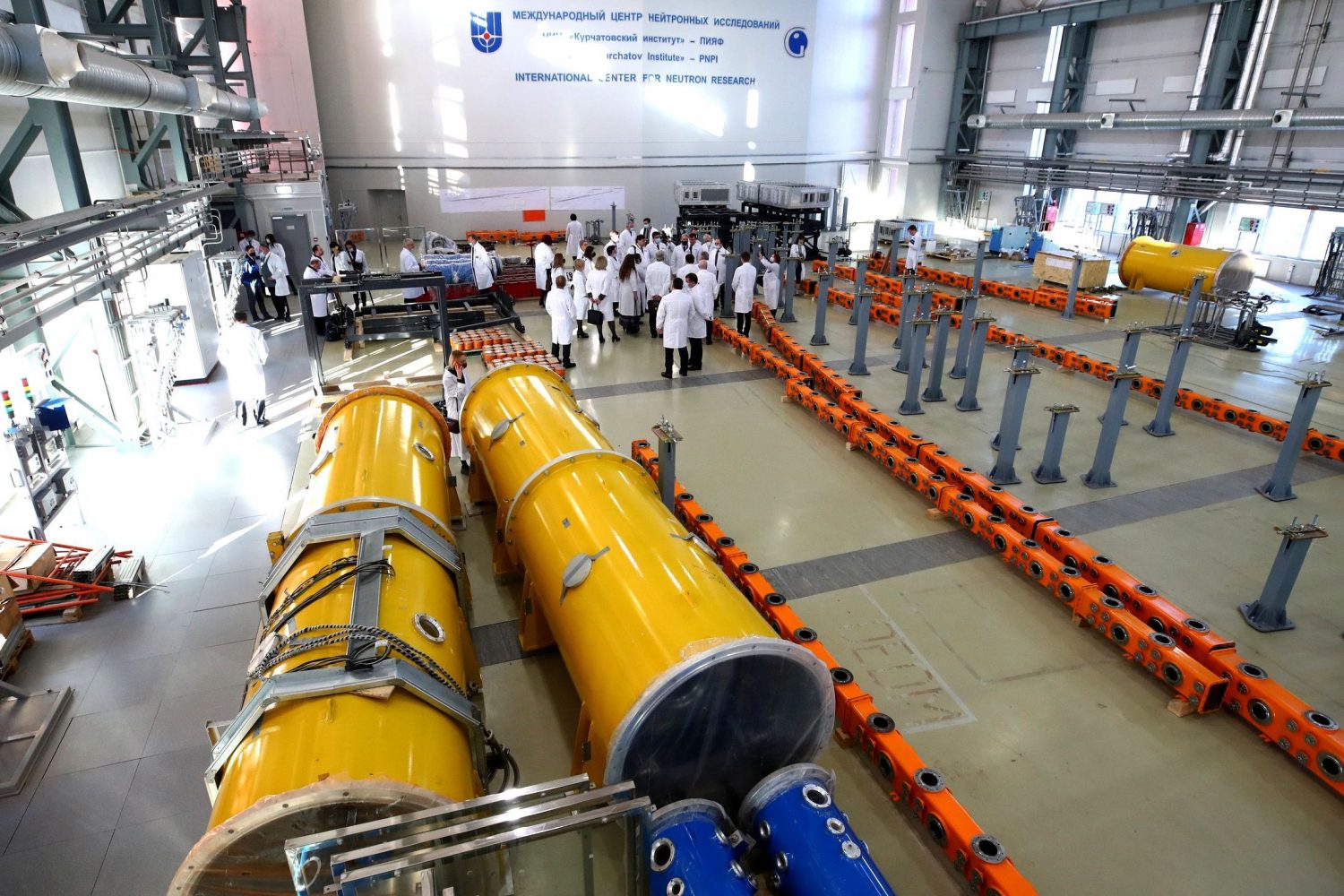
Big Science Steps Forward
back to contentsTwo complex Big Science projects in Russia have come closer to completion. On February 8, power launch of the PIK research reactor finally took place. Two days later, on February 10, the Russian nuclear watchdog Rostechnadzor issued a construction license for a pilot power unit with a fast neutron reactor BREST-OD-300. Both these projects are unique.
PIK
PIK is a Russian acronym for ‘a high flux beam research reactor’. The main function of the PIK reactor, as its name suggests, is to generate high flux neutron beams.
Neutron flux is used across many disciplines, including biology, medicine, material science and archeology, as a multi-purpose means of research. The neutron scattering method helps obtain detailed information about micro and nano systems. The use of cold neutrons, i.e. neutrons having low energies, small-angle scattering techniques and reflectometry enables researchers to take a deeper look into the physics of polymers, nano dispersions and other long disordered structures.
The reactor has a long – and difficult – history. Its construction began in the early 1970s, the ‘golden era’ of Soviet nuclear technology. By 1986, PIK was almost 70% complete, but after the Chernobyl disaster some of the reactor systems had to be modified, followed by the installation of additional safety systems and construction of new buildings and structures. It was only February 8, 2021, when the reactor was finally launched.
“It is our joint success – success of a broad academic community, success of Rosatom and, of course, Kurchatov Institute. The result achieved was only made possible thanks to our close and effective cooperation,” Mikhail Kovalchuk, President of Kurchatov Institute, where PIK is located, said at the launching ceremony.
PIK is an international project: it was developed with assistance from German researchers, and also a part of its equipment was manufactured in Germany. Kurchatov Institute has already signed an agreement with foreign research teams. “We signed an agreement with our Belarusian colleagues just two days ago… It provides for their participation in staging experiments using PIK,” Mikhail Kovalchuk said. According to him, researchers from many different countries express their interest in cooperation.
Russia will continue to build and launch research reactors. “Another project in this field is carried out by the Joint Institute for Nuclear Research in Dubna and the Research Institute of Atomic Reactors in Dimitrovgrad. It is MBIR, a research facility with a multi-purpose fast neutron reactor. With these two reactors, we will actually meet the total global demand for neutron research. This is important in terms of both fundamental science and development of nuclear power, particularly transition to the fourth generation of nuclear reactors,” Rosatom Director General Alexey Likhachev reassured.
PIK is expected to be fully commissioned in 2022.
BREST
BREST-OD-300 stands for a ‘lead-cooled fast neutron reactor’. Its electrical capacity is 300 MW. The reactor has an integrated arrangement: steam generators are placed inside a multi-layer steel and concrete core barrel.
The use of lead coolant with a relatively high boiling point (around 1,700℃) and high-density mononitride fuel with a melting temperature of over 2,800℃, passive residual heat removal, and the possibility of coolant circulation even with pumps off are natural safety systems preventing severe accidents.
With the regulatory license issued, Rosatom is allowed to begin construction of the reactor.
BREST-OD-300 is part of a pilot research center (ODEK), which is currently built in Seversk (Tomsk Region). The center will also have a fuel fabrication and re-fabrication facility and a spent fuel processing facility. The fabrication/re-fabrication facility is already under construction.
“All the key systems and equipment of the BREST reactor and the fabrication/re-fabrication and spent fuel processing facilities are absolutely unparalleled. The team of the Proryv (Breakthrough) project has to solve non-routine tasks in both construction management and an extensive program of research needed for the technical part of the reactor design,” Natalia Nikipelova, President of TVEL (Rosatom fuel company), pointed out.
For eight years now, TVEL and its subsidiary Siberian Chemical Plant (SCP) have taken part in the BREST project. The plant has manufactured over a thousand of pilot fuel assemblies containing mixed uranium plutonium nitride (MUPN) fuel. SCP has tried different designs and structural materials to find an optimal solution for the reactor. The first lot of pilot fuel rods was loaded into the BN-600 reactor of the Beloyarsk NPP in 2014. In 2016, they were taken out and studied thoroughly. The study showed that the rods had maintained its dimensions, with no defects identified in their structural parts. Several more assemblies, each containing 61 fuel rods, were loaded into the reactor in the spring of 2020. Engineering design of fuel rods to be used in commercial operation of the reactor was developed at Bochvar Russian Research Institute of Inorganic Materials (VNIINM).
BREST is scheduled to go critical in 2026. The launch of ODEK will bring the industry forward on its way to closing the nuclear fuel cycle, maximizing the use of energy contained in natural uranium and minimizing radioactive waste.




